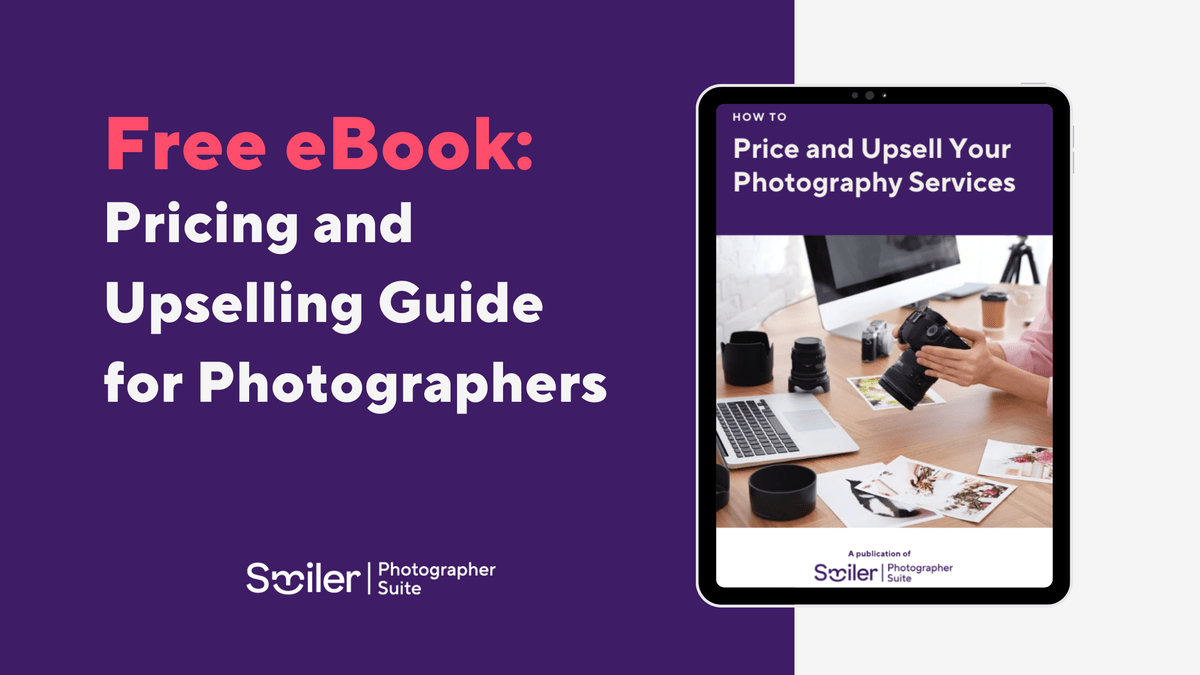Practical Tips for Managing Finances as a Photographer

In the photography industry, there exists a dilemma between passion for photography and financial pragmatism. For many photographers, the love for capturing photos and creating visual stories is what drives them. However, the reality of running a successful photography business requires a keen understanding of financial management – a skill that often feels at odds with the creative spirit.
This dichotomy presents a unique challenge for photographers who must manage the workload of pricing their work, allocating expenses, and planning for the future, all while maintaining the artistic integrity that drew them to the field in the first place. The photographer's dilemma is not just about taking stunning photographs; it's about building a sustainable business that allows for continued growth and creativity.
In today's guide, we will explore finance for photographers, offering insights, strategies, and practical tips to help you find the perfect balance between your artistic aspirations and business skills.
How to Set Up a Solid Financial Foundation
The cornerstone of any successful photography business is a robust financial foundation. This begins with separating personal and business finances – a critical step many new photographers overlook. By establishing a dedicated business bank account and credit card, you create a clear delineation between your personal expenses and those related to your photography work.
Next, invest time in creating a comprehensive business plan. This document should outline your services, target market, competitive analysis, and financial projections. While it may seem like a lot of work, a well-done business plan acts as a roadmap for your photography business and can be invaluable when seeking funding or making strategic decisions.
Benoit Le Berre, Chief Financial Officer at Smiler, says creating a detailed budget and allocating your time and resources towards achieving your goals are the first steps.
"We recommend setting quarterly plans, as they allow for regular review and adjustments. This approach ensures your plans remain actionable and relevant to your daily activities."
Price Your Photography Services Fairly
One of the most challenging aspects of running a photography business is determining how to price your services. Underpricing can lead to unsustainable practices and burnout, while overpricing may result in lost opportunities. The key is to find a balance that reflects your skill level, market demand, and the value you provide to clients.
Begin by conducting thorough market research to understand the going rates for photography services in your area and niche. This will provide a baseline from which you can adjust based on your unique offerings and experience. Remember, pricing is not just about covering your costs; it's about valuing your time, expertise, and the quality of your work.
Factor in all costs associated with each job, including equipment usage, travel expenses, editing time, and any additional services you provide. Don't forget to account for your overhead costs such as studio rent, software subscriptions, and marketing expenses when calculating your rates.
Regularly review and adjust your pricing strategy based on your growing experience, portfolio, and market conditions. As you build your reputation and skill set, don't be afraid to incrementally increase your rates to reflect your enhanced value proposition.

Download your free eBook to get more in-depth about pricing and upselling strategies.
Cash Flow and Expenses
Effective cash flow management is the lifeblood of any successful photography business. The irregular nature of income in this field – with busy seasons often followed by slower periods – makes it crucial to maintain a steady handle on your finances.
Start by creating a detailed budget that outlines your fixed and variable expenses. Fixed costs might include studio rent, equipment leases, and insurance premiums, while variable expenses could encompass travel costs, props, and marketing expenditures. Having a clear understanding of your monthly financial obligations allows you to plan accordingly and avoid cash flow crunches.
Implement a system for tracking and following up on invoices. Late payments can severely impact your cash flow. Dennis Shirshikov, the Head of Growth at Gosummer.com and a finance professor at the City University of New York, recommends having contract structures to ensure timely client payments.
"To ensure that you get paid on time, I recommend using contracts that include clear payment terms. A common best practice is to require a deposit upfront—usually 25-50%—with the remainder due upon project completion.
You can also build in late fees for overdue payments to encourage clients to pay on time. Having a solid contract not only protects you legally but also helps set expectations from the start, minimizing the likelihood of payment delays."
For instance, using Smiler Photographer Suite's payment link feature you can request a deposit or partial payment upfront. This deposit not only helps reduce the likelihood of last-minute cancellations but also compensates you for your time if they do cancel.
Regularly review your business expenses and look for areas where you can cut costs without compromising the quality of your work. This might involve negotiating better rates with suppliers, finding more cost-effective alternatives for certain services, or leveraging technology to streamline operations and reduce overhead. We have a detailed guide about a simple 3-step review you can do on your own, make sure to give it a read!
- Benoit Le Berre
Invest in Equipment and Software When Needed
For photographers, equipment and software are not just tools of the trade – they're investments in the quality and efficiency of your work. However, balancing the need for top-notch gear with financial prudence requires careful consideration.
Before making any significant purchases, conduct a thorough cost-benefit analysis. Consider how the new equipment or software will improve your work, increase efficiency, or open up new revenue streams. Will it allow you to take on new types of projects or enhance the quality of your existing services?
Stay informed about emerging technologies and industry trends, but avoid the temptation to purchase every new gadget or software update. Focus on investments that align with your business goals and have a clear path to ROI (Return on Investment). Consider the lifecycle of your equipment and plan for upgrades and replacements.
Don't overlook the importance of maintaining and protecting your equipment. Regular servicing and proper insurance coverage can extend the life of your gear and protect you from costly replacements due to damage or theft.
Tax Considerations for Photographers
Unless you're a finance bro, taxes are probably one of your least favourite topics. However, it is a crucial part of financial management for photographers. The unique nature of the photography business, with its mix of self-employment income, equipment depreciation, and various deductible expenses, requires a thorough understanding of tax regulations and careful record-keeping.
Understanding tax laws can make a big difference in keeping more of what you earn and avoiding any costly mistakes. While it might not be the most exciting part of running a photography business, handling taxes properly ensures you stay on top of your finances and can focus on doing what you love—photography!
- Dennis Shirshikov
Consider working with a tax professional who has experience with creative professionals or small businesses. They can provide invaluable insights into maximising your deductions while ensuring compliance with tax laws. This expertise can often save you money in the long run! Stay informed about changes in tax laws that may affect your business. The tax landscape is constantly evolving, and new regulations or deductions could have a significant impact on your financial planning.
Austin Rulfs, Founder and SME Business Investor at Zanda Wealth recommends setting aside money for taxes every time you get paid.
"It’s easy to get caught up in the day-to-day, but come tax season, you don’t want to be scrambling. A simple habit of allocating 25-30% of each payment into a separate account can save you a lot of stress."
Build an Emergency Fund
As a self-employed photographer, the responsibility for planning and saving for retirement falls squarely on your shoulders. While most freelancers might budget for general economic slowdowns, photographers need to consider specific seasonal and industry-related dips in business. For example, wedding photographers often see fewer bookings in the winter, while commercial photographers might experience slow periods when businesses tighten their marketing budgets. A well-planned emergency fund should cover these dry spells, and it’s worth tracking these trends over several years to set aside extra cash for lean months.
How to Build an Emergency Fund as a Freelance Photographer
Open a Separate Savings Account
It’s tempting to dip into your emergency fund if it's sitting in your everyday account. To avoid this, open a separate savings account specifically for your emergency fund. Ideally, this account should be easily accessible in an emergency but not so convenient that you’re tempted to use it for non-emergency purchases.
Calculate Your Monthly Needs—Personal & Professional
To determine how much you should save, calculate your total monthly expenses. Be sure to account for both personal living costs (rent/mortgage, groceries, utilities) and your business expenses (gear maintenance, software subscriptions, insurance, and taxes). The number might be higher than you expect, but it will give you a clear goal to work toward!
Start Small with Realistic Goals
It’s normal to feel overwhelmed by the idea of saving several months’ worth of expenses, especially when income varies from month to month. Instead of focusing on a daunting number, start with a smaller, achievable goal—like saving one month's worth of expenses. From there, gradually work your way up to three to six months of living expenses and business costs. Remember that it’s okay to start small and build up over time.
Develop a habit of consistently setting aside a portion of your income for retirement, even if it's a small amount to start. As your business grows and stabilises, gradually increase your contributions. The power of compound interest means that starting early, even with modest amounts, can significantly impact your retirement savings over time!
The idea of setting up an emergency fund might feel like just one more obligation in an already full schedule. But remember, this isn’t just about safeguarding against unexpected expenses; it's about giving yourself peace of mind and room to breathe when things don’t go as planned.
It’s okay to start small. You’re not expected to have all the answers or save it all at once. Every little bit you put away is a reminder that you’re prioritising your well-being, ensuring that when life’s unexpected moments arise, you’ll have the freedom and security to navigate them without added stress.
Bonus Tip: Make Payments Easy and Stress-Free
As a freelance photographer, you want your focus on your work and clients, not chasing payments or dealing with complicated transactions. That’s why you need to make it effortless for your clients to pay you, giving both you and them one less thing to worry about.
That's why Smiler Photographer Suite supports 10+ payment methods and 30+ currencies, meaning your clients can pay in the way that’s most convenient for them—whether it’s through credit cards, bank transfers, or other popular payment options. No matter where your clients are located, they can pay you in their local currency, removing any confusion about exchange rates or additional fees. This level of flexibility not only makes the process smoother but also helps build trust and comfort with your clients.
Smiler’s easy-to-use system allows you to accept partial payments too—perfect for large projects or clients who want to spread out their payments. By offering flexible options, you’re making your services more accessible to a wider range of clients, while ensuring your cash flow remains steady.
Ultimately, your photography business flourishes when clients can work with you without unnecessary hurdles. With Smiler, you have a seamless payment solution that eliminates obstacles, making it simple for clients to choose your services—and for you to get paid faster.
Only by establishing sound financial practices, you create the freedom to take artistic risks and pursue passion projects without jeopardising your business's stability.
Running a business, especially in a creative industry, is tough. The challenges can feel endless, from managing clients to handling your own finances, but it’s so worth it. You get to do what you love, share your vision with the world, and make a living from your passion. That's why we designed Smiler Photographer Suite to help photographers just like you, to simplify the business side of things, giving you more time to focus on your craft.
Best part is, it's super simple to get started (and it's free). If you want to take control of your finances, simplify your workflow, and keep doing what you love with less stress. Check out Smiler today!



